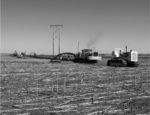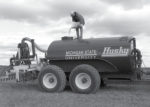Advertise Follow Us
Articles Tagged with ''soil''
A need for better corn stands led these brothers to strip-till
Read More
Local No-Tillers Join To Create Research Farm
With funding from a variety of sponsors, they can investigate the practices that work well in their immediate area and prepare for the future with confidence.
Read More
What I've Learned from No-Tilling
Rotations, Equipment Adaptations Help Deliver Long-Term Success
Read More28 Critical Points To Consider Before No-Tilling Continuous Corn
Mindful of an emerging trend, an agricultural engineer offers guidelines to thoughtful decision-making for no-tillers thinking about leaping into monoculture corn.
Read More
What I've Learned from No-Tilling
We Tied It All Together With Smooth Transition To Strip-Tilling
Multi-purpose equipment aids efficiency, and current practices could qualify for soil and water conservation payments.
Read More
No-Till And Organic Techniques Coming Together Out East
Thirty years of research, trial and error and changing attitudes, along with improved equipment, are setting the stage for grower success.
Read More
Seeding Cover Crops With Liquid Manure
No-tillers with livestock will want to study this one-pass system that saves time and money while improving soil quality.
Read More
Variable Rates Pay Off For Nebraska No-Tiller
An Exactrix wing injection system cuts nitrogen rates by 70 pounds per acre with no seedbed disturbance.
Read More











